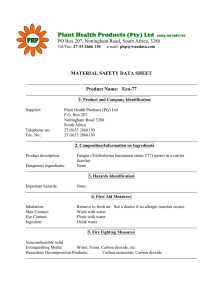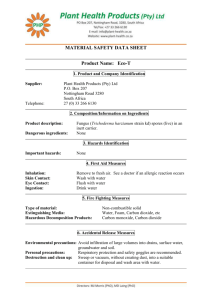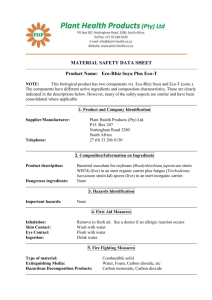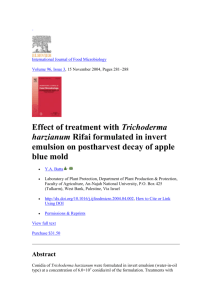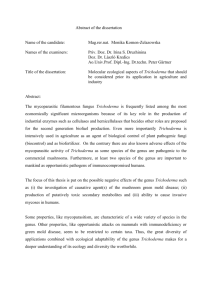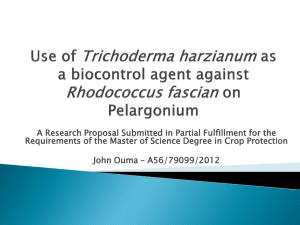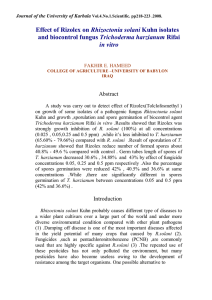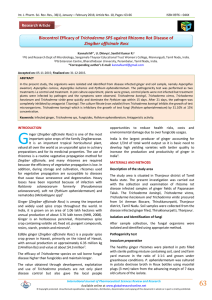Biodiversity of the genus Trichoderma in rice fields of
advertisement
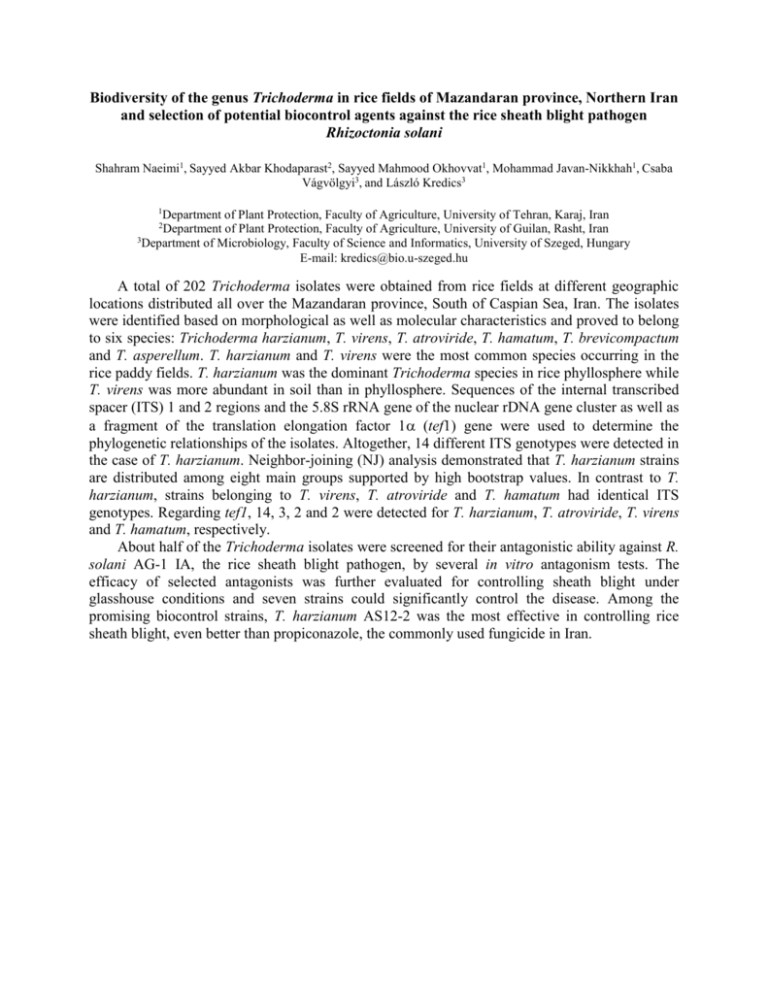
Biodiversity of the genus Trichoderma in rice fields of Mazandaran province, Northern Iran and selection of potential biocontrol agents against the rice sheath blight pathogen Rhizoctonia solani Shahram Naeimi1, Sayyed Akbar Khodaparast2, Sayyed Mahmood Okhovvat1, Mohammad Javan-Nikkhah1, Csaba Vágvölgyi3, and László Kredics3 1 Department of Plant Protection, Faculty of Agriculture, University of Tehran, Karaj, Iran Department of Plant Protection, Faculty of Agriculture, University of Guilan, Rasht, Iran 3 Department of Microbiology, Faculty of Science and Informatics, University of Szeged, Hungary E-mail: kredics@bio.u-szeged.hu 2 A total of 202 Trichoderma isolates were obtained from rice fields at different geographic locations distributed all over the Mazandaran province, South of Caspian Sea, Iran. The isolates were identified based on morphological as well as molecular characteristics and proved to belong to six species: Trichoderma harzianum, T. virens, T. atroviride, T. hamatum, T. brevicompactum and T. asperellum. T. harzianum and T. virens were the most common species occurring in the rice paddy fields. T. harzianum was the dominant Trichoderma species in rice phyllosphere while T. virens was more abundant in soil than in phyllosphere. Sequences of the internal transcribed spacer (ITS) 1 and 2 regions and the 5.8S rRNA gene of the nuclear rDNA gene cluster as well as a fragment of the translation elongation factor 1 (tef1) gene were used to determine the phylogenetic relationships of the isolates. Altogether, 14 different ITS genotypes were detected in the case of T. harzianum. Neighbor-joining (NJ) analysis demonstrated that T. harzianum strains are distributed among eight main groups supported by high bootstrap values. In contrast to T. harzianum, strains belonging to T. virens, T. atroviride and T. hamatum had identical ITS genotypes. Regarding tef1, 14, 3, 2 and 2 were detected for T. harzianum, T. atroviride, T. virens and T. hamatum, respectively. About half of the Trichoderma isolates were screened for their antagonistic ability against R. solani AG-1 IA, the rice sheath blight pathogen, by several in vitro antagonism tests. The efficacy of selected antagonists was further evaluated for controlling sheath blight under glasshouse conditions and seven strains could significantly control the disease. Among the promising biocontrol strains, T. harzianum AS12-2 was the most effective in controlling rice sheath blight, even better than propiconazole, the commonly used fungicide in Iran.
